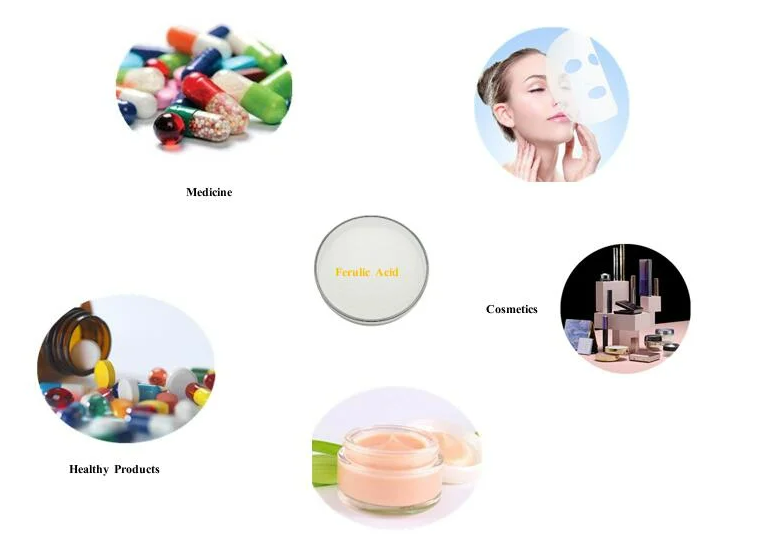Let’s learn skincare Ingredient together -Ferulic Acid
Ferulic acid, also known as 3-methoxy-4-hydroxycinnamic acid, is a phenolic acid compound widely present in plants. It plays a structural support and defense role in the cell walls of many plants. In 1866, German Hlasweta H was first isolated from Ferula foetida regei and therefore named ferulic acid. Afterwards, people extracted ferulic acid from the seeds and leaves of various plants. Research has shown that ferulic acid is one of the effective ingredients in various traditional Chinese medicines such as ferula, Ligusticum chuanxiong, Angelica sinensis, Gastrodia elata, and Schisandra chinensis, and is one of the main indicators for measuring the quality of these herbs.
Ferulic acid has a wide range of effects and is widely used in industries such as medicine, food, beauty and skincare
In the field of skincare, ferulic acid can effectively resist ultraviolet radiation, inhibit the activity of tyrosinase and melanocytes, and has anti wrinkle, anti-aging, antioxidant, and whitening effects.
antioxidant
Ferulic acid can effectively neutralize free radicals and reduce their damage to skin cells. The mechanism is that ferulic acid provides electrons to free radicals to stabilize them, thereby preventing the oxidative chain reaction caused by free radicals, protecting the integrity and function of skin cells. It can also eliminate excess reactive oxygen species in the body and inhibit oxygen stress by inhibiting the production of lipid peroxide MDA.
Is there any ingredient that can synergistically enhance the efficacy with ferulic acid? The most classic one is CEF (the combination of “Vitamin C+Vitamin E+Ferulic Acid” abbreviated as CEF), which is widely recognized in the industry. This combination not only enhances the antioxidant and whitening abilities of VE and VC, but also improves their stability in the formula. In addition, ferulic acid is a good combination with resveratrol or retinol, which can further enhance the overall antioxidant defense ability.
Light protection
Ferulic acid has good UV absorption around 290-330nm, while UV radiation between 305-315nm is most likely to induce skin erythema. Ferulic acid and its derivatives can alleviate the toxic side effects of high-dose UVB irradiation on melanocytes and have a certain photoprotective effect on the epidermis.
Inhibit collagen degradation
Ferulic acid has a protective effect on the main structures of the skin (keratinocytes, fibroblasts, collagen, elastin) and can inhibit the degradation of collagen. Ferulic acid reduces the breakdown of collagen by regulating the activity of related enzymes, thereby maintaining the fullness and elasticity of the skin
Whitening and anti-inflammatory
In terms of whitening, ferulic acid can inhibit the production of melanin, reduce the formation of pigmentation, and make skin tone more uniform and bright. Its mechanism of action is to affect the signaling pathway within melanocytes, reduce the activity of tyrosinase, and thus decrease the synthesis of melanin.
In terms of anti-inflammatory effects, ferulic acid can inhibit the release of inflammatory mediators and alleviate skin inflammation. For acne prone or sensitive skin, ferulic acid can alleviate redness, swelling, and pain, promote skin repair and recovery.
